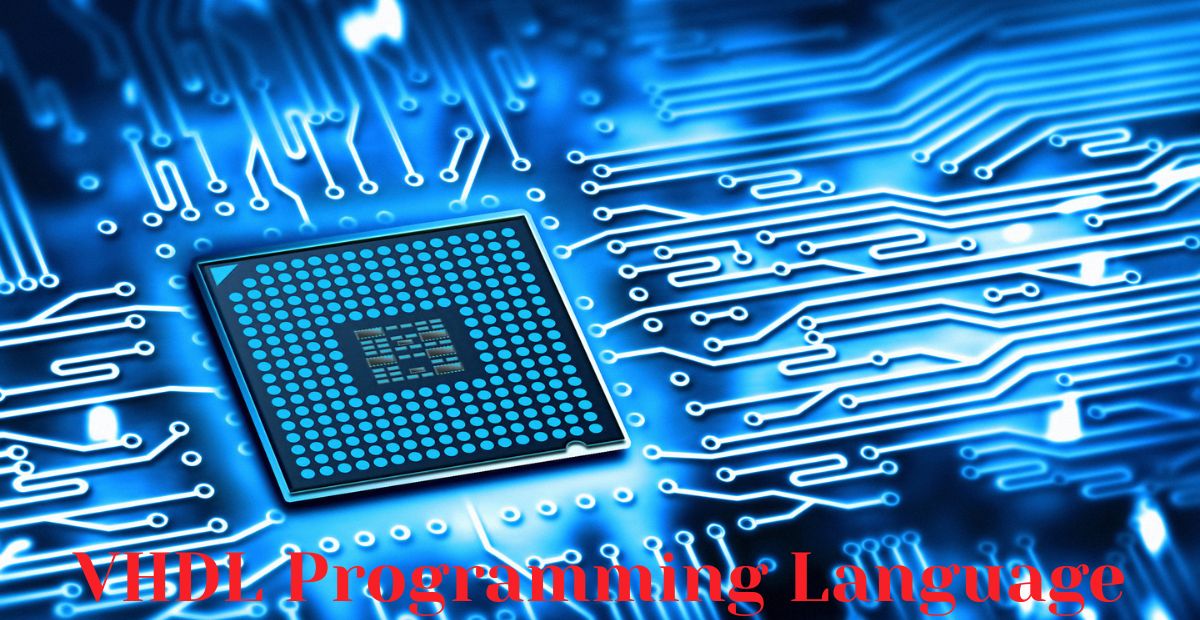Python is a widely used programming language that is renowned for its ease of use, adaptability, and robust library. Whether you’re a beginner or an experienced developer, choosing the best IDEs for Python development can significantly impact your productivity.
In this comprehensive guide, we’ll explore the top Python IDEs and code editors, their features, pros, cons, and use cases. By the end, you’ll know which IDE suits your needs best.
Why Use an IDE for Python Development?
Tools from an Integrated Development Environment (IDE) make testing, debugging, and coding more efficient.
- Code completion & suggestions
- Syntax highlighting & error detection
- Debugging & profiling tools
- Integrated terminal & version control
- Plugin & extension support
Let us now explore the top Python IDEs that will be accessible in 2025.
1. PyCharm – Best Python IDE for Professionals
PyCharm, developed by JetBrains, is one of the most powerful and popular Integrated Development Environments (IDEs) for Python programming. It offers a feature rich, efficient, and user-friendly environment that boosts productivity for beginners and professionals alike.
Whether you’re working on web development, data science, machine learning, or automation, PyCharm provides smart code completion, debugging, testing, and version control integration, making it a top choice for Python developers worldwide.
Best for: Professional developers, large projects, AI/ML development
Key Features:
- Smart code completion
- Built-in debugger & testing tools
- Support for Django, Flask, and other frameworks
- Database integration & scientific tools
- Remote development capabilities
Pros:
- Excellent code navigation & refactoring
- Strong support for web development
- AI-powered coding assistance (in Pro version)
Cons:
- Free version (Community Edition) lacks some advanced features
- Can be resource-intensive
2. The Best Lightweight Python IDE is Visual Studio Code (VS Code)
VS Code is Microsoft’s free, open-source editor that runs on Windows, macOS, and Linux. It has become one of the most popular tools for Python development due to its lightweight design, powerful extensions, and customizable workflow.
Whether you’re working on web apps, data science, automation, or machine learning, VS Code provides IntelliSense, debugging, Git integration, and a vast extension library, making it a versatile and efficient choice for developers.
Best for: Beginners, web developers, multi-language projects
Key Features:
- Lightweight & highly customizable
- IntelliSense for smart code completion
- Integrated Git control
- Extensive extensions marketplace
- Jupyter Notebooks support
Pros:
- Free & open source
- Cross-platform (Windows, macOS, Linux)
- Excellent for JavaScript, HTML, and Python
Cons:
- Requires extensions for full Python functionality
- Debugging can be slower than PyCharm
3. Spyder: The Best IDE for Data Science and Scientific Computing
Spyder (Scientific Python Development Environment) is a free, open-source IDE designed specifically for data scientists, engineers, and researchers. Spyder offers a scientific Python environment with MATLAB-like workflows, integrating a code editor, debugger, and visualization tools
With seamless integration with NumPy, Pandas, Matplotlib, and SciPy, Spyder is the premier IDE for scientific Python workflows, offering specialized tools for numerical computing and ML development.
Best for: Data scientists, researchers, numerical computing
Key Features:
- Built-in variable explorer
- Interactive IPython console
- Matplotlib & NumPy integration
- Advanced debugging & profiling
Pros:
- Optimized for scientific Python development
- Great for machine learning & data analysis
- Lightweight compared to PyCharm
Cons:
- Not ideal for web development
- Limited plugin ecosystem
4. Jupyter Notebook – Best for Interactive Python Coding
Jupyter Notebook provides a browser-based interface for creating interactive documents combining executable code, visualizations, and rich text. Widely used in data science, machine learning, and academic research, Jupyter Notebook supports Python, R, Julia, and more.
With its cell-based execution and rich output display, Jupyter Notebook is perfect for exploratory data analysis, prototyping models, and collaborative research.
Best for: Data analysis, academic research, teaching
Key Features:
- Interactive code execution
- Supports Markdown & LaTeX
- Visualizations inline with code
- Cloud-based (Google Colab, Kaggle)
Pros:
- Excellent for prototyping & data exploration
- Easy to share notebooks
- Free & widely used in academia
Cons:
- Not a full-fledged IDE
- Debugging is limited
5. Thonny – Best Python IDE for Beginners
Thonny is a free, lightweight, and beginner-friendly Python IDE designed specifically for new programmers and educators. With its simple interface, step-by-step debugger, and built-in Python interpreter, Thonny helps beginners learn coding concepts without unnecessary complexity.
Ideal for students, teachers, and first-time coders, Thonny removes common frustrations by providing clear error explanations, variable visualization, and easy package management.
Best for: Students, new programmers, simple projects
Key Features:
- Simple & beginner-friendly UI
- Step-by-step debugger
- No setup required
- Built-in Python package manager
Pros:
- Perfect for learning Python basics
- Lightweight & easy to install
- No confusing configurations
Cons:
- Not suitable for large projects
- Limited advanced features
6. Sublime Text – Best Lightweight Python Code Editor
Sublime Text is a fast, customizable, and cross-platform text editor loved by developers for its speed, simplicity, and extensibility. While not a full-fledged IDE, its lightweight design, powerful plugins, and Python-friendly features make it a top choice for quick scripting, web development, and efficient coding workflows.
With instant project switching, multi-cursor editing, and a rich package ecosystem, Sublime Text boosts productivity for both beginners and advanced Python programmers.
Best for: Fast coding, minimalists, quick edits
Key Features:
- Super-fast performance
- Multiple cursors & shortcuts
- Highly customizable
- Python plugins available
Pros:
- Extremely lightweight
- Great for quick scripting
- Beautiful UI & themes
Cons:
- No built-in debugger
- Requires plugins for full IDE features
7. Atom – Best Open-Source Python Editor
Atom is GitHub’s open-source text editor offering extensive customization through packages and themes Designed with modern coding workflows in mind, Atom offers a sleek interface, smart autocompletion, and Git integration, making it a solid choice for Python developers, web designers, and open-source contributors.
While not as lightweight as Sublime Text or as feature-rich as PyCharm, Atom stands out for its extensibility, community-driven packages, and built-in collaboration tools.
Best for: Hackable editor, GitHub integration
Key Features:
- Built-in Git integration
- Teletype for collaborative coding
- Extensive package library
- Cross-platform support
Pros:
- Free & open source
- Highly customizable
- Good for web development
Cons:
- Slower than VS Code
- Development discontinued (but still usable)
8. Eclipse with PyDev – Best for Java & Python Developers
Eclipse PyDev combines Eclipse’s extensible platform with professional Python tools for large-scale development. While primarily known for Java, PyDev transforms Eclipse into a full-featured Python IDE with smart code analysis, debugging, and Django integration.
Ideal for large-scale projects, scientific computing, and multi-language development, Eclipse + PyDev is a strong choice for developers who need deep customization and extensibility.
Best for: Multi-language projects (Java + Python)
Key Features:
- Supports multiple languages
- Powerful debugging tools
- Code analysis & refactoring
Pros:
- Great for mixed-language projects
- Free & open source
Cons:
- Complex setup
- Heavy on system resources
9. Wing IDE – Best for Debugging & Testing
Wing IDE is a lightweight yet powerful Python-specific IDE designed for professional developers, data scientists, and educators. Known for its exceptional debugging capabilities, intelligent editor, and remote development support, Wing IDE boosts productivity in scientific computing, web development, and automation scripting.
With three editions (Personal, Professional, Pro), Wing IDE caters to beginners, freelancers, and enterprise teams seeking a fast, reliable, and feature-rich Python coding environment.
Best for: Professional debugging, remote development
Key Features:
- Advanced debugging tools
- Remote development support
- Test-driven development (TDD) features
Pros:
- Excellent for debugging complex apps
- Lightweight compared to PyCharm
Cons:
- Paid license required for full features
- Smaller community than VS Code/PyCharm
10. IDLE – Default Python IDE (Good for Beginners)
IDLE is Python’s built-in IDE, providing basic development tools with every standard Python install. Designed by Guido van Rossum (Python’s creator), IDLE offers a simple, no-frills environment perfect for beginners, educators, and quick scripting.
While not as powerful as PyCharm or VS Code, IDLE provides essential Python development tools with zero setup required, making it ideal for new coders and small projects.
Best for: Learning Python basics
Key Features:
- Pre-installed with Python
- Simple & lightweight
- Basic debugging tools
Pros:
- No setup required
- Good for absolute beginners
Cons:
- Very limited features
- Not suitable for professional use
How to Choose the Best Python IDE?
Consider these factors when selecting an IDE:
- Project Type (Web, Data Science, AI/ML)
- Performance & Speed
- Debugging & Testing Needs
- Community & Plugin Support
- Cost (Free vs. Paid)
Conclusion
Your needs will determine which Python IDE is ideal for you. PyCharm is for experts, VS Code is for flexibility, and Jupyter is for data science. Beginners should start with Thonny or IDLE.
Which IDE do you prefer? Let us know in the comments!
FAQs: Best IDEs for Python Development
What is the best IDE for Python in 2025?
- PyCharm (Best for professionals & large projects)
- VS Code (Best lightweight & versatile editor)
- Spyder (Best for data science & scientific computing)
- The best tool for interactive scripting and data processing is the Jupyter Notebook.
- Thonny (Best for beginners)
Is VS Code better than PyCharm for Python?
- VS Code is lightweight, free, and highly customizable, making it great for beginners and web developers.
- PyCharm offers deeper Python-specific features, better debugging, and AI-powered assistance (in Pro version).
- Choose VS Code if you want speed & flexibility. Choose PyCharm if you need advanced Python tools.
Can I use Jupyter Notebook as a full Python IDE?
Which Python IDE is best for beginners?
- Thonny (Simple, built-in debugger, no setup needed)
- IDLE (Comes with Python, very basic)
- VS Code (Lightweight with extensions for growth)
Is PyCharm free?
Which Python IDE is ideal for machine learning?
- PyCharm (Full-featured, supports TensorFlow/PyTorch)
- VS Code (With Python & Jupyter extensions)
- Spyder (Great for data exploration & visualization)
Can beginners use Sublime Text effectively for Python coding?
What is the fastest Python IDE?
- Sublime Text (Extremely lightweight)
- VS Code (Fast with good extensions)
- PyCharm (Slower but more powerful)
Does Python need an IDE?
Which IDE is best for Python web development?
- PyCharm (Best for Django, Flask)
- VS Code (Great with HTML/JavaScript integration)
Is Atom still good for Python in 2025?
Can Eclipse be used for Python?
What’s the best free Python IDE?
- VS Code (Most versatile)
- PyCharm Community (Best for pure Python)
- Spyder (Best for data science)
Which IDE is best for debugging Python code?
- PyCharm (Advanced debugger)
- Wing IDE (Specialized debugging tools)
- VS Code (Good with Python extension)
Is IDLE good for Python programming?





